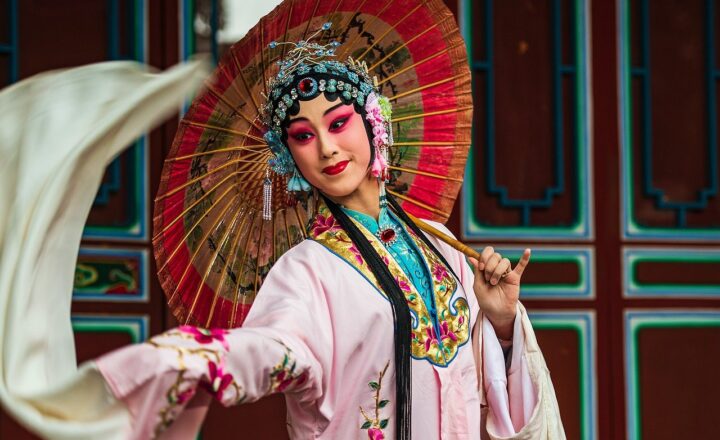The World’s Most Unusual Cultural Rituals and What They Teach Us
November 13, 2024

Culture is a fascinating tapestry woven from the threads of traditions, customs, and rituals that define the lives of people around the globe. While some cultural practices may seem similar, others are so unique that they can leave outsiders bewildered and intrigued. In this article, we will delve into some of the world’s most unusual cultural rituals, exploring their origins, meanings, and the profound lessons they offer to humanity.
1. The Kanamara Matsuri – The Festival of the Steel Phallus
Celebrated annually in Kawasaki, Japan, the Kanamara Matsuri is a vibrant festival dedicated to fertility and safe childbirth. With a history that traces back centuries, this unusual ritual has become famous for its playful parades in which large phallic symbols are carried through the streets.
The festival has roots in local Shinto beliefs that pray for the conception of children and the happiness of families. Interestingly, the Kanamara Matsuri also promotes discussion around sexual health issues, with proceeds from the event directed towards HIV research. This blend of celebration and awareness illustrates how odd rituals can tackle serious societal topics.
2. La Tomatina – The World’s Biggest Food Fight
Hailing from the town of Buñol in Spain, La Tomatina is a week-long celebration culminating in a massive tomato fight. This whimsical event began in 1945 under unclear circumstances, but today attracts thousands of participants annually, all eager to partake in a playful battle with ripe tomatoes.
Beyond the sheer fun of hurling tomatoes, La Tomatina teaches us about the importance of community and joy. It allows attendees to break away from the mundane and indulge in messy revelry, reminding participants of the cathartic release of laughter and play in our lives.
3. The Baby Jumping Festival – El Colacho
Celebrated in Castrillo de Murcia, Spain, El Colacho is a unique festival where men dressed as devils leap over babies lying on mattresses in the street. This peculiar ritual occurs every June and is believed to cleanse the infants of original sin and bring them good luck.
While the concept might seem alarming, the festival serves as a form of cultural identity and community bonding. The act of jumping over babies symbolizes protection and health for infants, illustrating the deep emotion tied to the wellbeing of children in communities around the world.
4. The Dance with Death – The Catrina Parade
As part of the Día de los Muertos (Day of the Dead) festivities in Mexico, the Catrina Parade offers an extraordinary glimpse into Mexico’s relationship with death. Participants dress up as elegantly adorned skeletons, reflecting a vibrant and festive perspective on mortality.
The Catrina represents a belief that death is a part of life and should be celebrated rather than feared. This cultural ritual teaches us that grief and joy can coexist, encouraging an appreciation for life and a respectful acknowledgment of those who have passed.
5. The Water Festival – Songkran
In Thailand, the Songkran Festival marks the traditional New Year and is characterized by elaborate water battles. The use of water symbolizes the washing away of sins and bad luck, making way for a fresh start in the year ahead.
During this festival, people take to the streets armed with water guns, buckets, and hoses, joyfully soaking each other in celebration. This unconventional practice emphasizes the cultural importance of cleansing, as well as the communal spirit and social bonding that comes through shared experiences of joy, laughter, and fun.
6. The Gudi Padwa – New Year’s Day in Maharashtra
Gudi Padwa, celebrated in Maharashtra, India, marks the New Year according to the lunisolar calendar. One of the most striking rituals involves hoisting a Gudi, a decorated pole with a bright cloth and a pot, outside homes to herald prosperity and positivity for the coming year.
The symbolism here encourages inhabitants to welcome good fortune and abundance into their lives. This meaningful practice of setting intentions for the new year sheds light on the importance of hope and mindfulness in various cultures, reinforcing their ability to foster emotional resilience in the face of challenges.
7. The Festival of the Hungry Ghosts
In Chinese culture, the Festival of the Hungry Ghosts is a time when families pay respect to deceased ancestors. Traditionally held during the seventh month of the lunar calendar, it is believed that the spirits of the dead return to the earthly realm, hungry and in need of offerings.
Families prepare food, incense, and paper offerings to honor their loved ones and provide them with comforts in the afterlife. This ritual highlights the deep respect for ancestry and the continual relationship between the living and the deceased, teaching us the value of familial bonds and remembrance across generations.
Conclusion
Cultural rituals, no matter how unusual, provide fascinating insights into the values, beliefs, and traditions of different communities. They teach us about the diverse ways people express love, joy, and respect. Understanding and participating in such customs foster a sense of connection to the world, broadening our perspectives on life itself. As we explore the richness of human experience through these eclectic rituals, we come to appreciate our shared humanity despite our diverse practices. By embracing the quirks of culture, we expand not just our understanding, but also our capacity for empathy and connection in an ever-changing world.







